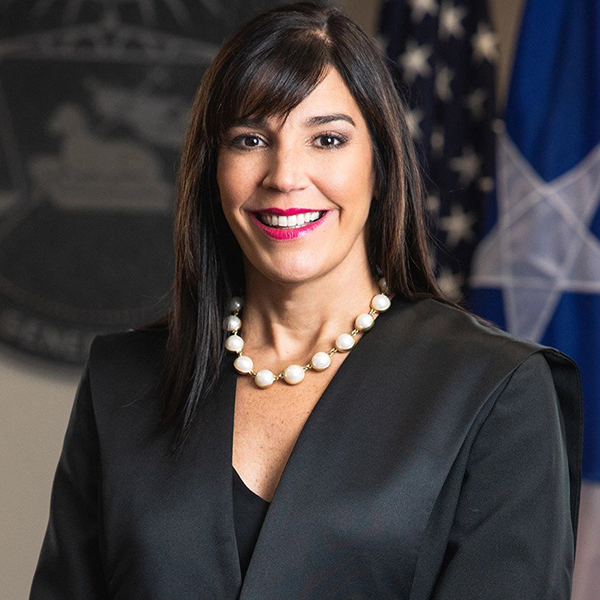Supreme Court rulings on labor and employment law leave many unanswered questions
U.S. Supreme Court
Although they did not receive the headlines of the most high-profile decisions of the October Term 2022, the U.S. Supreme Court decided two important cases concerning the law of the workplace. One involved the duty of employers to accommodate employees’ religious beliefs and practices. The other concerned when a union can be held liable for the economic consequences of a strike. Each is likely to engender a great deal of litigation.
Employment discrimination
Title VII of the 1964 Civil Rights Act prohibits employment discrimination based on race, sex or religion. With regard to religion, the Equal Employment Opportunity Commission has interpreted Title VII to mean that employers must make “‘reasonable accommodations to the religious needs of employees’ whenever that would not work an ‘undue hardship on the conduct of the employer’s business.’” The crucial questions then are what constitutes “reasonable accommodations” and what an “undue hardship” is.
In Trans World Airlines Inc. v. Hardison, in 1977, the Supreme Court articulated the standard for determining this. It said employers do not have to bear more than a “de minimis cost” to accommodate employees’ religious practices. In other words, if it is more than a minimal cost to the employer, its failure to provide an accommodation does not violate Title VII.
In Groff v. DeJoy, decided June 29, the court rejected this standard and adopted a new one, which is much more protective of employees’ religious freedom. Gerald Groff works for the United States Postal Service. He is an evangelical Christian who says his religion requires that he use his Sunday Sabbath for worship and rest. After the postal service entered into an agreement with Amazon to make Sunday deliveries, Groff was among those who was told he would need to work Sundays on a rotating basis.
Groff refused to do so, resigned and then sued the postal service under Title VII. The lower courts ruled against Groff, using the standard from TWA v. Hardison and concluded that accommodating Groff’s religious beliefs would impose more than a minimal burden on the postal service.
The Supreme Court in a unanimous decision reversed the lower courts. Justice Samuel Alito wrote for the court, stating: “We hold that showing ‘more than a de minimis cost,’ as that phrase is used in common parlance, does not suffice to establish ‘undue hardship’ under Title VII.” This is a clear rejection of the standard that has been followed for the last 45 years.
But the question then becomes, what is the new legal standard? The court declared: “We think it is enough to say that an employer must show that the burden of granting an accommodation would result in substantial increased costs in relation to the conduct of its particular business.”
This is a huge change in the law. Since 1977, employers have not had to provide an accommodation if it was more than a minimal burden; now they must do so unless it would incur a substantial cost. The crucial issue will be how courts are to decide what an insubstantial cost is so that employers must provide the accommodation or decide what a substantial cost is so they don’t. But the court gives little guidance to lower courts and litigants. There will be far more suits, and undoubtedly, it will take time for the courts to clarify how the new standard is to be applied and how the definition of a substantial cost in the totality of the circumstances will be determined.
Labor law
When can a union be held liable for the economic consequences of a strike? On the one hand, union members do not have the right to destroy an employer’s property as part of a strike. No one contends that a strike entails a right to throw bricks through the employer’s windows or set the workplace on fire. On the other hand, virtually all strikes impose costs. That is exactly why they are an effective and essential labor tool. If unions were liable for all the costs resulting from their strikes, no unions ever would be able to strike.
The legal issue arises as to whether the National Labor Relations Act, which protects the right of unions to strike, preempts state tort liability for the economic consequences of a strike. There is also the question of what the role of the National Labor Relations Board is in determining whether the right to strike is protected in a particular situation and the role it plays in courts adjudicating tort suits.
These issues were presented in Glacier Northwest Inc. v. International Brotherhood of Teamsters Local Union No. 174. The case involved a strike by cement truck drivers in Washington state. They had picked up their trucks on the morning of the strike and had begun driving them to their job sites. When the drivers began the strike that morning, they returned the trucks to their employer and left the drums turning so the trucks would not be damaged. But because the employer had chosen not to exercise its right to hire replacement workers or use nonstriking workers to deliver and pour the concrete, the concrete was ruined.
Glacier Northwest sued the union for damages for the loss of the concrete. The Washington Supreme Court concluded that state tort liability was preempted by federal law. It ruled in favor of the union, rejecting liability for the “claims related to the loss of its concrete product because that loss was incidental to a strike arguably protected by federal law.”
But the Supreme Court reversed in an 8-1 decision June 1, with Justice Amy Coney Barrett writing for the majority and only Justice Ketanji Brown Jackson dissenting. The court stressed that “[t]he drivers engaged in a sudden cessation of work that put Glacier’s property in foreseeable and imminent danger.” The court said the drivers’ action ruined the concrete and risked serious harm to the trucks.
The central issue before the court was whether the National Labor Relations Act, which protects the right of employees to strike, precludes a state court from imposing liability on a union for the economic consequences of a strike. In 1959, in San Diego Building Trades Council v. Garmon, the Supreme Court ruled that state court proceedings should be paused to allow the National Labor Relations Board to determine whether the union’s conduct was or was not protected or prohibited by the National Labor Relations Act.
This approach allows a federal agency, vested with authority by Congress and with its own expertise, to make the threshold determination of whether the strike is protected or prohibited by federal law. Indeed, the National Labor Relations Board is in the midst of a factual investigation to determine whether federal law protects the strike conducted by these cement workers.
But the Supreme Court did not follow the procedure of allowing the National Labor Relations Board to make the initial determination of whether the strike was protected by federal law. The high court decided the issue for itself, concluding that the drivers did not do enough to ensure the cement would not harden and that the strike was not even arguably protected by federal law.
The court acknowledged prior cases where employers lost perishable products as a result of a strike —such as poultry, milk and eggs—but liability for the union was rejected. Justice Barrett said those cases are distinguishable: “By reporting for duty and pretending as if they would deliver the concrete, the drivers prompted the creation of the perishable product. Then, they waited to walk off the job until the concrete was mixed and poured in the trucks. In so doing, they not only destroyed the concrete but also put Glacier’s trucks in harm’s way. This case therefore involves much more than ‘a work stoppage at a time when the loss of perishable products is foreseeable.’”
This case is important because it articulates a test for when unions can be held liable for the economic consequences of a strike: when there is “a risk of foreseeable, aggravated and imminent harm.” But it is unclear how that will be applied. All strikes (and employer lockouts) pose a “foreseeable” danger of harm. The strike by graduate students at the University of California in 2022 meant that some students did not get their grades on time, which might have hurt their employment prospects. The writers’ strike in Hollywood will lead to economic harm to studios, caterers, actors and set builders. Lockouts in professional sports have resulted in the cancellation of games and losses to players, TV networks and peanut vendors.
The question will be where the line will be drawn as to when unions can be sued for damages. A narrow reading of the decision, which is sure to be urged by unions, is that the cement workers’ conduct was akin to throwing a brick through the employer’s window. It was intentional destruction of property and therefore not protected by the National Labor Relations Act. A broad reading of this ruling, sure to be urged by management, is that this decision significantly expands the liability of unions when their strikes cause harm. Ultimately, the court will need to decide in the future how to determine what “a risk of foreseeable, aggravated and imminent harm” is.
Erwin Chemerinsky is dean of the University of California at Berkeley School of Law and author of the newly published book A Momentous Year in the Supreme Court. He is an expert in constitutional law, federal practice, civil rights and civil liberties, and appellate litigation. He’s also the author of The Case Against the Supreme Court; The Religion Clauses: The Case for Separating Church and State, written with Howard Gillman; and Presumed Guilty: How the Supreme Court Empowered the Police and Subverted Civil Rights.
This column reflects the opinions of the author and not necessarily the views of the ABA Journal—or the American Bar Association.






